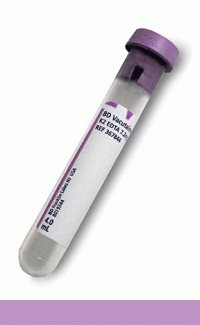Hepatitis B Virus DNA Quantitative PCR
Main Content
Test Code: 97757
CPT Code: 87517
Alternative Name(s): HBV DNA QN PCR
Methodology: Real-time Polymerase Chain Reaction
Clinical Significance: Hepatitis B virus (HBV) is a DNA virus containing a partially doublestranded genome of approximately 3.2 kb.1-3 HBV is one of the world’s most widespread infectious agents and the most common of several viruses worldwide that can cause lifelong, chronic infection, cirrhosis (scarring) of the liver, liver cancer, liver failure, and death.1 As of 2015, approximately 257 million people globally have chronic hepatitis B and approximately 887,000 people die each year due to complication of hepatitis B including cirrhosis and liver cancer. A common route of infection is mother-to-child transmission at birth or during early childhood. Other populations with high risk of HBV infection are associated with intravenous drug use, hemophilia, high-risk sexual activity, hemodialysis, needle stick injury in health care staff, and body piercing and tattooing.
Hepatitis is largely diagnosed via serology (e.g., hepatitis B surface antigen, hepatitis core antigen and hepatitis B surface antibody). Nucleic acid tests for HBV DNA are used as an aid in the management of patients with chronic HBV infection undergoing anti-viral therapy and to measure HBV DNA levels at baseline and during treatment to aid in assessing response to treatment.
Once a diagnosis of HBV infection is made, patients may receive treatment. Two classes of antivirals are available for treatment, interferonbased therapy (IFN) or nucleic acid-based therapy (NA), based on current clinical practice guidelines. Treatment duration and monitoring of viral response varies for each drug treatment class. The HBV viral load, in addition to other laboratory findings, is used in monitoring the response to both IFN and NA pharmacotherapy.
The HBV assay is designed to target highly conserved sequences of the HBV genome. HBV has significant genetic diversity within nine known HBV genotypes (A-I). The diversity arises in part due to low fidelity of the HBV DNA polymerase. To ensure assay robustness against this genetic diversity, the assay is designed to target a highly conserved region of the HBV genome. This design ensures detection and quantitation of all 9 HBV genotypes.
In addition to the HBV primers and probes, the assay utilizes an internal control (IC) primer/probe set for amplification and detection of the IC target sequence, which is not related to HBV. The IC controls for substantial reagent failure and sample inherent inhibitions of the PCR reaction. The IC probe is labeled with a different fluorophore than the HBV probes. This allows for simultaneous real-time detection and discrimination of both the HBV and IC amplified product targets within the same reaction vessel.
Supply: #193292 Lavender 4mL Blood Tube
Preferred Specimen: Plasma
Preferred Volume: 2mL
Collection Instructions: Mix by gentle inversion 3-4 times. Centrifuge to separate plasma from cells. Remove plasma immediately and refrigerate.
Transport Container: Pour off tube
Transport Temperature: Refrigerated
Specimen Stability: Refrigerated: 3 days
Reject Criteria:
Specimens exceeding stability, specimens collected in collection devices/tubes other than EDTA
For additional test, supply, or collection device information, please contact DLO's Customer Service at (800) 891-2917, option 2.
The CPT codes provided are based on AMA guidelines and are for informational purposes only. CPT coding is the sole responsibility of the billing party. Please direct any questions regarding coding to the payor being billed.



CLIA